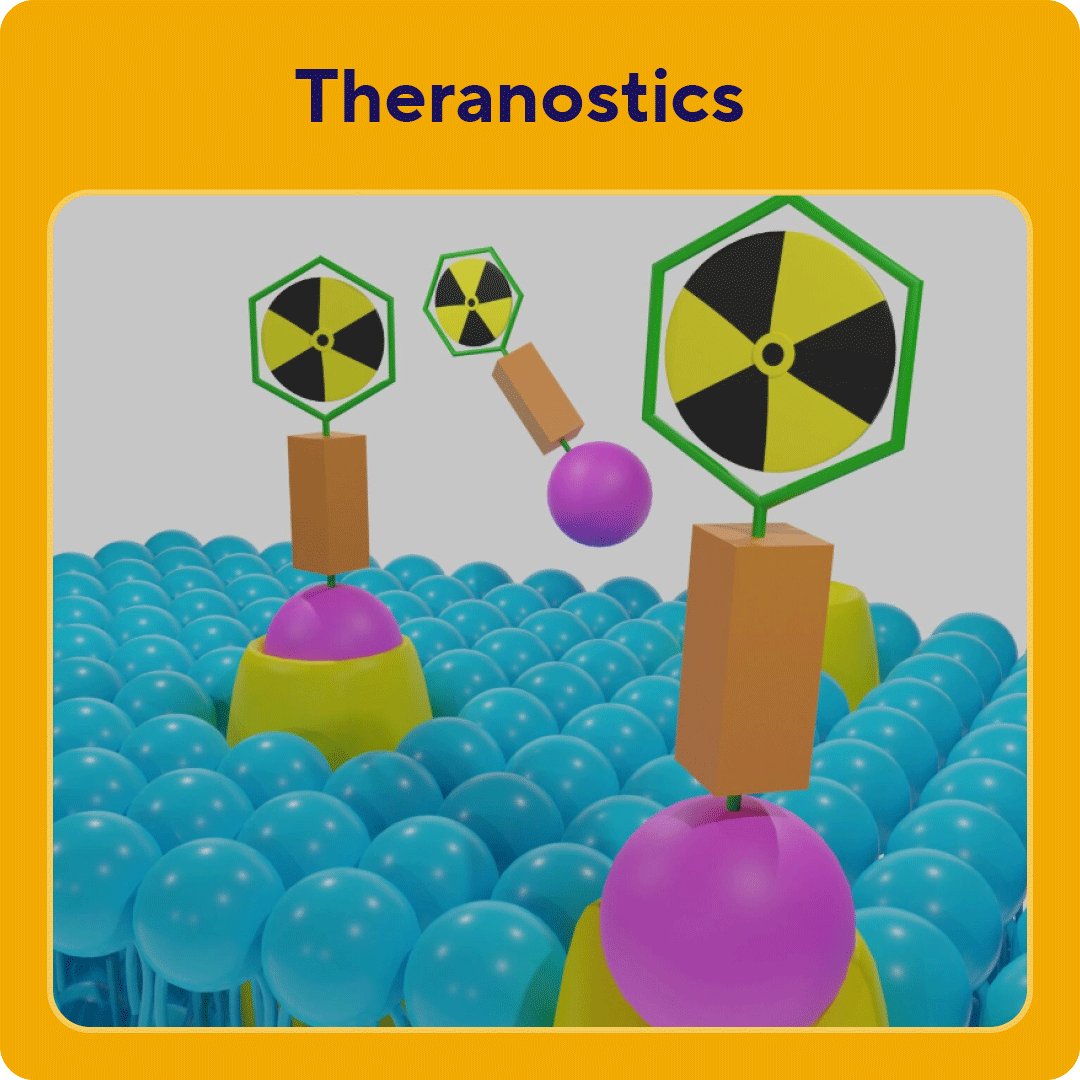Learn about theranostics – a combination of therapy and diagnostics – as a treatment for prostate cancer.
Theranostics is a highly precise treatment that aims to treat prostate cancer by combining therapy and diagnostic tools (hence the term, ‘theranostics’). It’s a relatively new cancer treatment, and it has had most success in treating metastatic prostate cancer and neuroendocrine tumours.
Theranostics comprises two steps:
The theranostic treatment for prostate cancer is called lutetium PSMA therapy (or ‘lutetium PSMA’). Lutetium-177 is a radioactive element that damages and destroys prostate cancer cells. PSMA (which stands for ‘prostate-specific membrane antigen’) is a type of protein found on the surface of cells in the prostate gland, some tumours and normal tissues.
Lutetium PSMA therapy doesn’t cure prostate cancer, but it can help people to have a long period of remission and has been shown to improve survival. It aims to:
Below, you can watch a short animation that explains theranostics.
Prostate cancer cells express around 1,000 times the amount of PSMA that normal prostate cells express. The PET-CT scan can show where PSMA avid tissue in other parts of the body when the cancer has spread. This is the diagnostic part of your theranostic treatment.
Then, you will have lutetium PSMA therapy:
As a result, the rest of your body is exposed to less radiation.
This video explains more about the role of PSMA in prostate cancer treatment.
Theranostics may be appropriate for treating people with prostate cancers that:
Theranostics may also be an option if other treatments are causing you significant harm or side effects.

Like all cancer treatments, there may be side effects associated with lutetium PSMA therapy, including:
Most of the radioactive drug that doesn’t reach the target is quickly passed out of the body, so these side effects should only be temporary. You’ll have regular blood tests to monitor your health status during and after your treatment.
If you’ve already had cancer treatments, like chemotherapy and radiotherapy, your bone marrow may be more sensitive to the radiation. If you have any questions or concerns about side effects, speak to your specialist.


